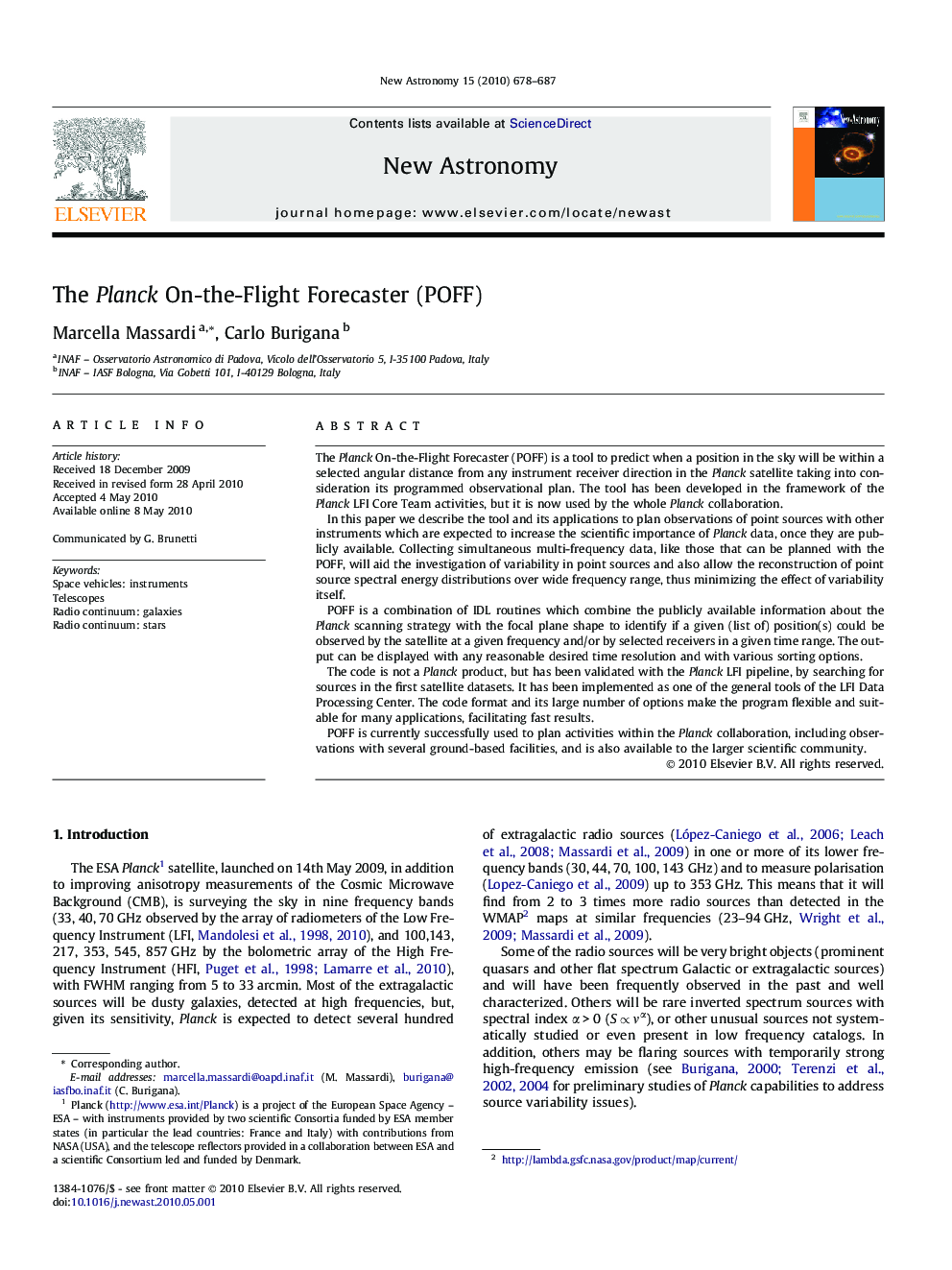| کد مقاله | کد نشریه | سال انتشار | مقاله انگلیسی | نسخه تمام متن |
|---|---|---|---|---|
| 1779618 | 1022012 | 2010 | 10 صفحه PDF | دانلود رایگان |

The Planck On-the-Flight Forecaster (POFF) is a tool to predict when a position in the sky will be within a selected angular distance from any instrument receiver direction in the Planck satellite taking into consideration its programmed observational plan. The tool has been developed in the framework of the Planck LFI Core Team activities, but it is now used by the whole Planck collaboration.In this paper we describe the tool and its applications to plan observations of point sources with other instruments which are expected to increase the scientific importance of Planck data, once they are publicly available. Collecting simultaneous multi-frequency data, like those that can be planned with the POFF, will aid the investigation of variability in point sources and also allow the reconstruction of point source spectral energy distributions over wide frequency range, thus minimizing the effect of variability itself.POFF is a combination of IDL routines which combine the publicly available information about the Planck scanning strategy with the focal plane shape to identify if a given (list of) position(s) could be observed by the satellite at a given frequency and/or by selected receivers in a given time range. The output can be displayed with any reasonable desired time resolution and with various sorting options.The code is not a Planck product, but has been validated with the Planck LFI pipeline, by searching for sources in the first satellite datasets. It has been implemented as one of the general tools of the LFI Data Processing Center. The code format and its large number of options make the program flexible and suitable for many applications, facilitating fast results.POFF is currently successfully used to plan activities within the Planck collaboration, including observations with several ground-based facilities, and is also available to the larger scientific community.
Journal: New Astronomy - Volume 15, Issue 8, November 2010, Pages 678–687